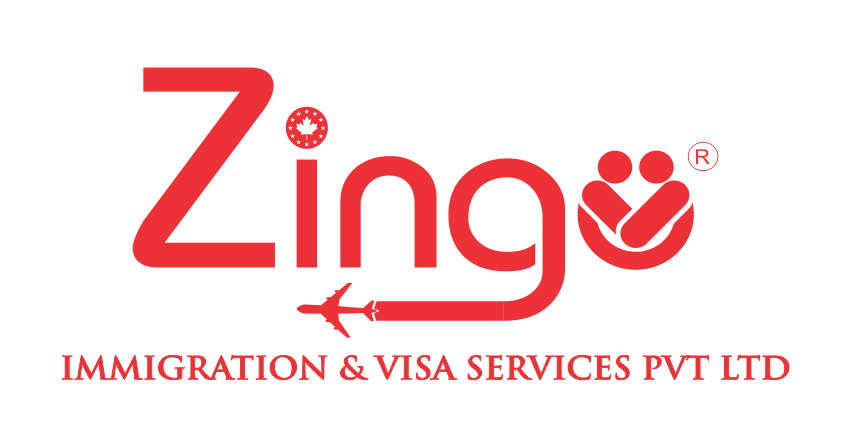Student Visas 2023: The Complete Guide to Studying Abroad
This article covers all the important points about Student Visas for studying abroad
Our Services
Ask Us Custom

United States
A land of dreams

United Kingdom
A new go-to destination

New Zealand
25 Universities

Hong Kong
A hub for professionals

Germany
A fast-track visa process

Australia
Favorite of all

Canada
60 Visas options
- What is a Student Visa?
- Intakes for a Student Visa
- Documents Required for a Student Visa
- How to Apply for a Student Visa?
- Costs of a Student Visa
- Other FAQs
Student visas are issued to international students. These are for applicants wanting to visit the country for education. Each country has its own immigration laws. They vary in terms of documents required, proof of funds, etc. There are also some factors that are common for all student visas.
By getting an in-depth understanding of the student visa process, you can plan ahead and complete the process without any problems.
Best Countries To Study
Here’s a list of the best countries in the world for students

United States
A land of dreams

United Kingdom
A new go-to destination

New Zealand
25 Universities

Hong Kong
A hub for professionals

Germany
A fast-track visa process

Australia
Favorite of all

Canada
60 Visas options
What is a Student Visa?
A student visa is a type of non-immigrant visa. In some countries like Canada, it is known as a study permit. This visa is for prospective students wishing to complete higher education abroad.
This visa can permit you to study at a qualified education institution in the country.
What are the Intakes for a Student Visa?
Intakes for a student visa in universities are also known as semesters. These are periods during which universities accept new students. These usually vary from country to country.
Let us look at the intakes of a few major countries.
- August to December (Fall term)
- January to April (Spring term)
- May to August (Summer term)
- September (Fall intake)
- January (Winter intake)
- May (Spring intake)
- Semester 1: Late February/early March to late May/early June
- Semester 2: Late July/early August to November
Related FAQs
Fall Intake: Scholarship Opportunities: More scholarship opportunities for a student. Better networking options. Work Part-Time: More part-time work opportunities for a full-time student. Teacher assistant and research jobs available. Options for Courses: Broad range of course options available. Internship Opportunities: Applying for an internship is easy. 9-month criteria are easily met. Leadership Positions: A fall student can easily lead a social group. Work Opportunities: Placement drives at universities start during this time. Spring Intake:
Scholarship Opportunities: Scholarship opportunities are less for a student. Most scholarships are available at the beginning of the year. Part-time Work: Fewer opportunities for research and on-campus employment. Options for Courses: Limited number of courses. Internship Opportunities: A spring student has to face the 9-month eligibility problem. So it’s difficult to enroll with a company. Leadership Positions: By spring, they already form the social groups. Leadership opportunities are hard to find.
Work Opportunities: By Spring, companies have employed the Fall applicants. Hence, job opportunities are limited.
Which are the Top Universities for Studying Abroad?
The top universities for studying abroad are given below.
- Harvard University
- Stanford University
- Princeton University
- The University of Chicago
- Massachusetts Institute of Technology
- California Institute of Technology
- Yale University
- The University of California – Berkeley Campus
University of Toronto
- McGill University
- University of Sherbrooke
- The University of British Columbia
- McMaster University
- University of Alberta
- The University of Melbourne
- The University of Queensland
- The University of Sydney
- The University of Western Australia
- Australian National University
- Monash University
- University of New South Wales
- University of Cambridge, UK
- University College London, UK
- King’s College London
- Ludwig Maximilians University Munich, Germany
- Ecole Polytechnique, France
- Eindhoven University of Technology, Holland
- University of Oxford, UK
- The University of Edinburgh
- Heidelberg University, Germany
- Technical University of Munich, Germany
- Sorbonne University, France
- University of Amsterdam, Holland
Related FAQS
The USA: Masters in Business Administration (MBA):
It is one of the most popular courses in the USA. Universities like Stanford and Harvard are the top universities offering this course. Engineering:
Popular engineering courses include Civil and Structural Engineering, Chemical, Electronics, and Computer Science. Stanford and MIT are some of the top universities. The United Kingdom:
Masters in Business Administration (MBA):
This is the top choice for a student completing their Master’s in the UK. The best universities for this course are Cambridge and Oxford. Natural Sciences: This course is slowly gaining popularity among students in the UK. Oxford and Cambridge are the top universities offering this course. Canada:
Engineering:
One of the most popular courses in Canada Top specializations are for Electrical, Mechanical, and Aerospace Engineering Top universities offering Engineering courses include the University of Waterloo and the University of British Columbia. Masters in Business Administration (MBA):
Canada is the most popular choice for MBA courses. The University of Toronto and McGill University have maximum intake for this course. Dentistry:
One of the oldest courses in Canada Top universities offering Dentistry courses are the University of Toronto and the University of British Columbia. Australia:
Masters in Business Administration (MBA): MBA is one of the top choices for Masters in Australia. It covers areas like marketing and finance. Top universities offering this course are the Australian Graduate School of Management and Melbourne Business School. Engineering:
Master’s courses in Electrical and Civil Engineering are popular in Australia. Top universities include the University of South Wales and the University of Melbourne. Germany:
Masters in Business Administration (MBA): This is the second most popular Master's course in Germany. The Ludwig-Maximilians-Universitat München and the University of Mannheim are the top institutes offering this course. Engineering:
Most popular course in Germany More than 71,000 international students are currently pursuing it Top specializations are for Electrical, Mechanical, and Automotive Engineering Top universities include The Technical University of Berlin and the Technical University of Munich.
The USA:
A valid passport The validity date on the passport must exceed six months beyond your staying period
Recent passport size photograph DS-160 Confirmation page Form I-20 Payment of SEVIS fee Non-immigrant application
Canada:
Be enrolled in a designated university Provide proof of funds for Tuition fees Living expenses for you and your family Return travel for you and your family A police certificate and no criminal record Be in good health and get medically examined if needed Prove that you will leave Canada after the expiration of your study permit
Australia:
Be enrolled in a full-time course at an Australian university. Provide proof of being a Genuine Temporary Entrance. Provide a certificate of good health. Provide proof of good character. Passport and other supporting documents
Germany:
Passport and other visa application documents Proof of financial stability Proof of admission in a German university Evidence of previous education Public health insurance Entrance qualification exam(HZB) English or German language proficiency certificate
Hungary:
High education standard and low tuition fee The average tuition fees are $1000 Scholarship available for an international student Top universities include the University of Szeged, Eötvös Loránd University, and the University of Debrecen. Finland:
One of the cheapest countries in Europe for an international student Cheap tuition fee University of Helsinki and Aalto University are some of the top institutes in Finland. Sweden:
Superior living standards No tuition fee needed An international student can access partial scholarship Some of the top universities in Sweden are Urban Center University and Karolinska Institute. Poland:
Low tuition fee Low cost of living Top universities include the University of Warsaw and Jagiellonian University.
What Documents are Required for a Student Visa?
The documents required for a student visa are:
- Valid passport
- Proof of being a bonafide student
- Payment receipts for universities
- Educational documents
- Proof of funds
- Bank statements
- Loan approval letter
- Scholarship letters
- Affidavit of support
- Language proficiency result
- GPF/EPF statement
- Property evaluation report
- CA certificate
- Loan capability certificate
- Bank letters
Related FAQs
How to Apply for a Student Visa?
In order to apply for a student visa, you need to follow the rules set by different countries.
Step 2: Take a printout of the confirmation page
Step 3: Upload a photograph following the guidelines
Step 4: Schedule a visa interview at the nearest US embassy or consulate
Step 5: Pay the visa application fee
Step 6: Gather all the required documents
Step 7: Attend the visa interview
Step 8: Obtain your visa after the visa processing time is over.
Step 2: Check the Canadian study permit tool to see if you need a student visa.
Step 3: Apply online on the CIC website.
Step 4: Visa applicants submit documents online or offline.
Step 5: Provide the application letter
. Step 6: Provide proof for sufficient financial resources.
Step 7: Present proof confirming the absence of a criminal record.
Step 8: Submit clinical records and health insurance related documents.
Step 9: Prepare all the documents required for a Canadian student visa.
Step 10: Submit proof for English language proficiency.
Step 11: Have your biometrics taken at a visa application centre.
Step 12: Pay the application fee at the visa application centre.
Step 13: Attend your visa interview.
Step 14: Wait for the visa to be processed.
Step 2: Carefully study all the requirements for a German student visa.
Step 3: Arrange for a visa appointment.
Step 4: Prepare all the supporting documents for the visa application.
Step 5: Pay the visa application fee.
Step 6: Prepare yourself for the visa interview.
Step 7: Wait for the visa processing period.
How Much Does it Cost to Get a Student Visa?
The cost of getting a student visa for different countries is:
- Service fee of $350 (Rs 25701.48)
- Application fee of $160 (Rs 11749.25) for F, J, and M type of visa
- Sevis fee for an exchange visitor is around $220 (Rs 16155.22)
- The fee for General UK visa for students is 348 Pound sterling (Rs 33,036.26)
- The fee for a short term student visa is 97 Pound sterling (Rs 9208.38) for 6-month and 186 Pound sterling (Rs 17,657.31) for an 11-month visa.
- Applying for a study permit in Canada costs $CAN 150 (Rs 8307.16)
- The student visa application for Australia is AU$620 (Rs 32,565.86)
- The visa fee for a German student visa is 75 Euro (Rs 6490.80)
How Long Does it Take to Get a Student Visa?
The time required for getting a student visa for different countries are:
- Scheduling a visit to the embassy takes around 3 days but might take longer.
- Application processing time is between 3 days to a few weeks.
The processing time is around 20-90 days
- Processing time is usually around 4 weeks.
- Might take longer because of the high volume.
- The standard processing time is 25 days.
- In some cases, it might take 6-12 weeks or even 3 months.
Why Choose Zingo Immigration?
Zingo Immigration Overseas Careers is the best immigration consultant in India. Don’t take our word for it, we have the numbers to prove it. Served 20K+ customers and over 3K+ active cases.
- Visit Visa: Travel for leisure or business to any part of the world with Zingo Immigration.
- Study Visa: Study in Globally-recognized Universities!
- Work Visa: Work & settle in the World’s Best Cities!
- Immigration: We are your one-stop solution for all your visa and immigration needs
- Permanent Residence: Become a Permanent Resident and enjoy special benefits.
Customized services:
- Profile Evaluation: Based on your unique profile history, we make matches with the visa eligibility requirements, and advise you with the visas you must apply for.
- Resume Writing: We guide you to create a resume that stands out as desired by the concerned immigration authority.
- Procuring documents: Help you arrange documents needed before applying for a visa.
- Professional guidance: Be it providing you with interview training, French/English courses or working samples for resumes, cover letters or assisting with application forms, medical or police clearance certificates - we will always be there for you.
- Dedicated Case-Officer: We offer personal assistance and a single point-of-contact between the company and you, throughout the process
- Post-Landing Services: We help you settle down in the country after you’ve received your visa. These services are specifically customized as per your requirements.
You can expect a one-stop solution for all your visa needs from profile evaluation, documentation, application drafting to post-visa services with Zingo Immigration . If you are confused about filing the AIPP application, you can contact us immediately. We will be pleased to help you in any way we can.
Don’t wait. Begin your visa application today!






